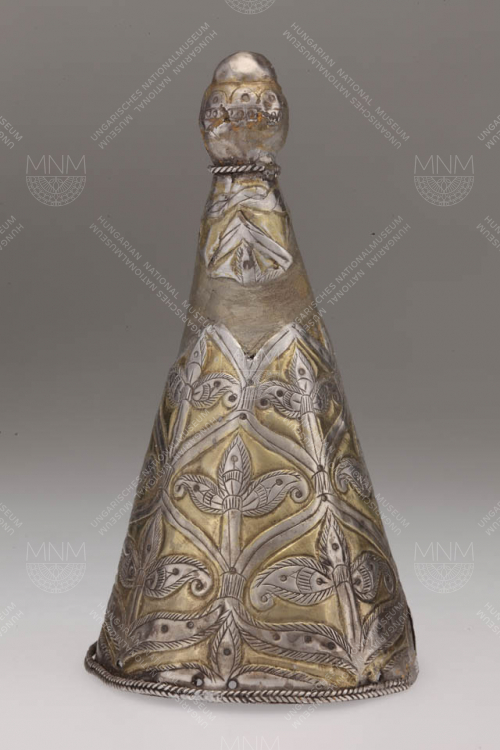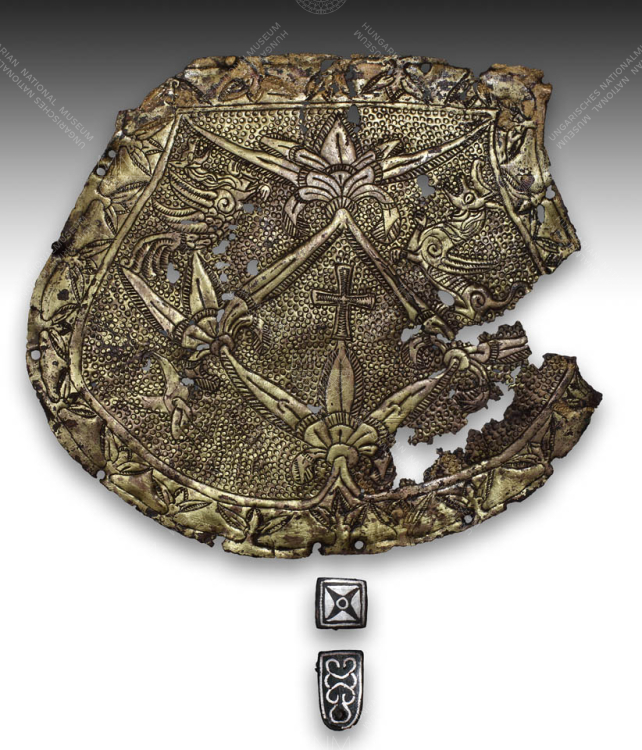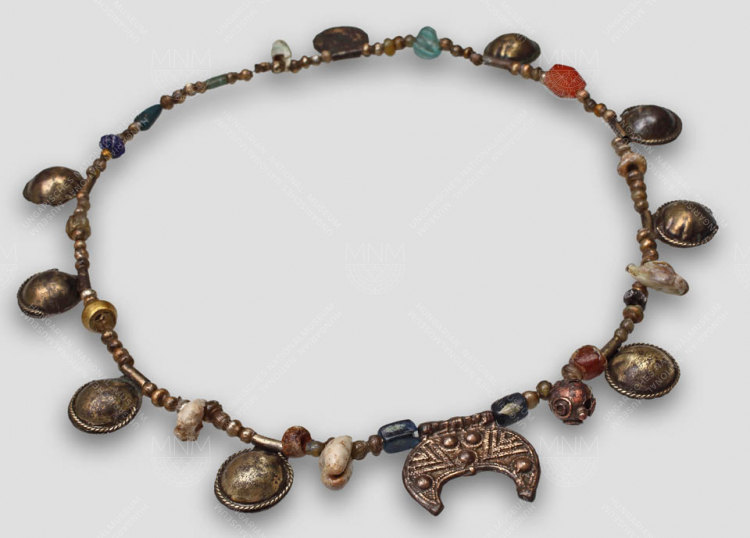
Room 10
Arriving in the Carpathian Basin in 895, the Hungarians took possession of the whole of this geographical unity and then settled its lowland areas. Their adventurous campaigns brought significant material wealth to their tribal-clan aristocracy, but also kept Byzantine and German conquerors away from their country, which was then being set up. From the mid-10th century, they adapted successfully to the changed international conditions, thus making it possible for them to establish, at the turn of the new millennium, the Christian Kingdom of Hungary which became the most powerful state in the region.
interesting facts:
Counting as rarities, sabretache plates were symbols of power for dignitaries in the service of the ruling prince; many surviving examples of these artefacts can be regarded as first-rate creations of goldsmiths’ art. Clothing worn by wealthy women was ornamented using decorative mountings to which pendants were attached. Silver-gilt rosette-like horse-harness decorations are also important finds.
Disks for use on plaited hair that were decorated with palmettes or mythical animals were likewise parts of female attire. Hungarian goldsmiths made these out of sheet metal with embossed decoration, as well as in cast, openwork versions. The disks were worn on ribbons woven together with individual plaits.















